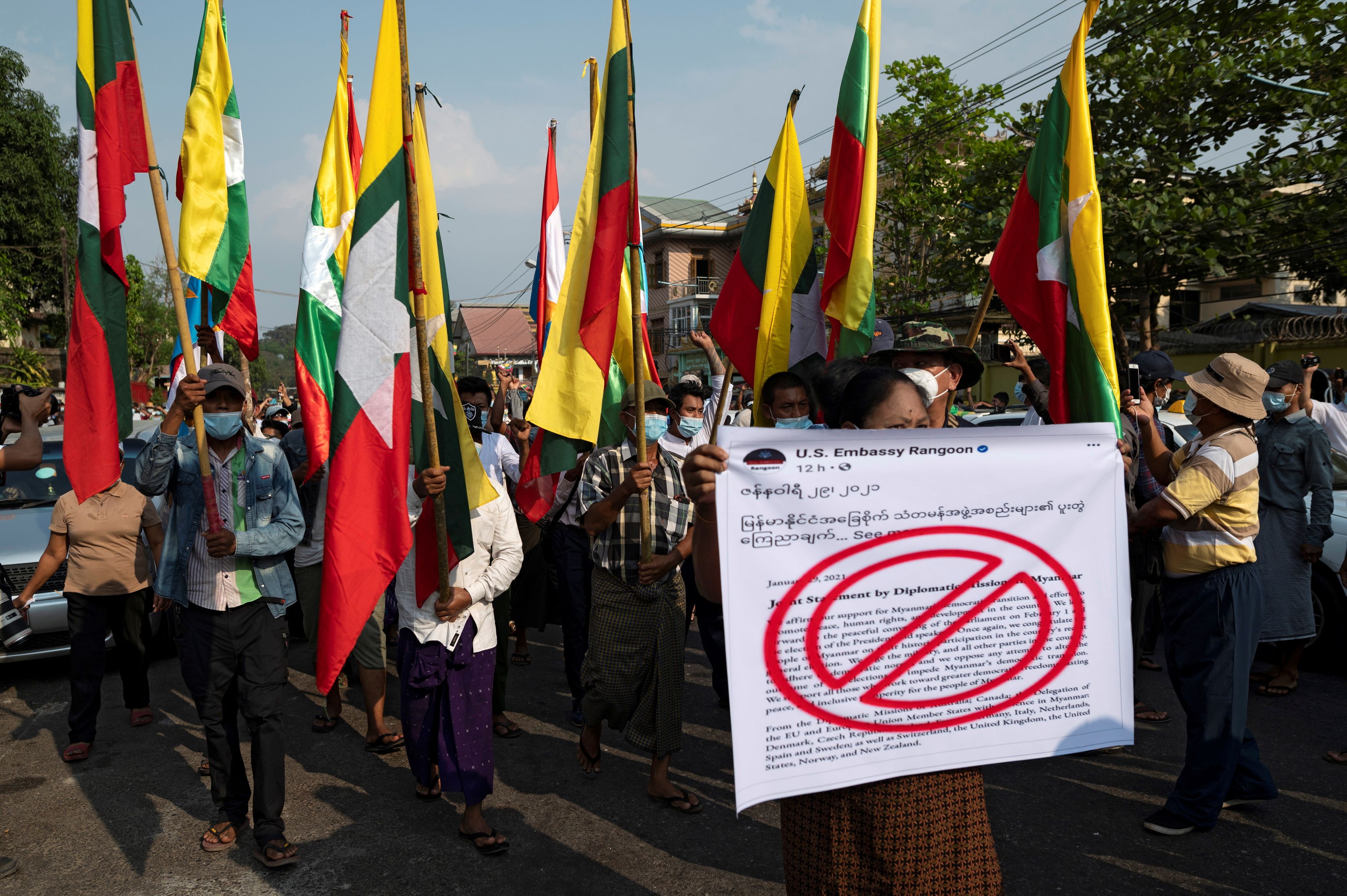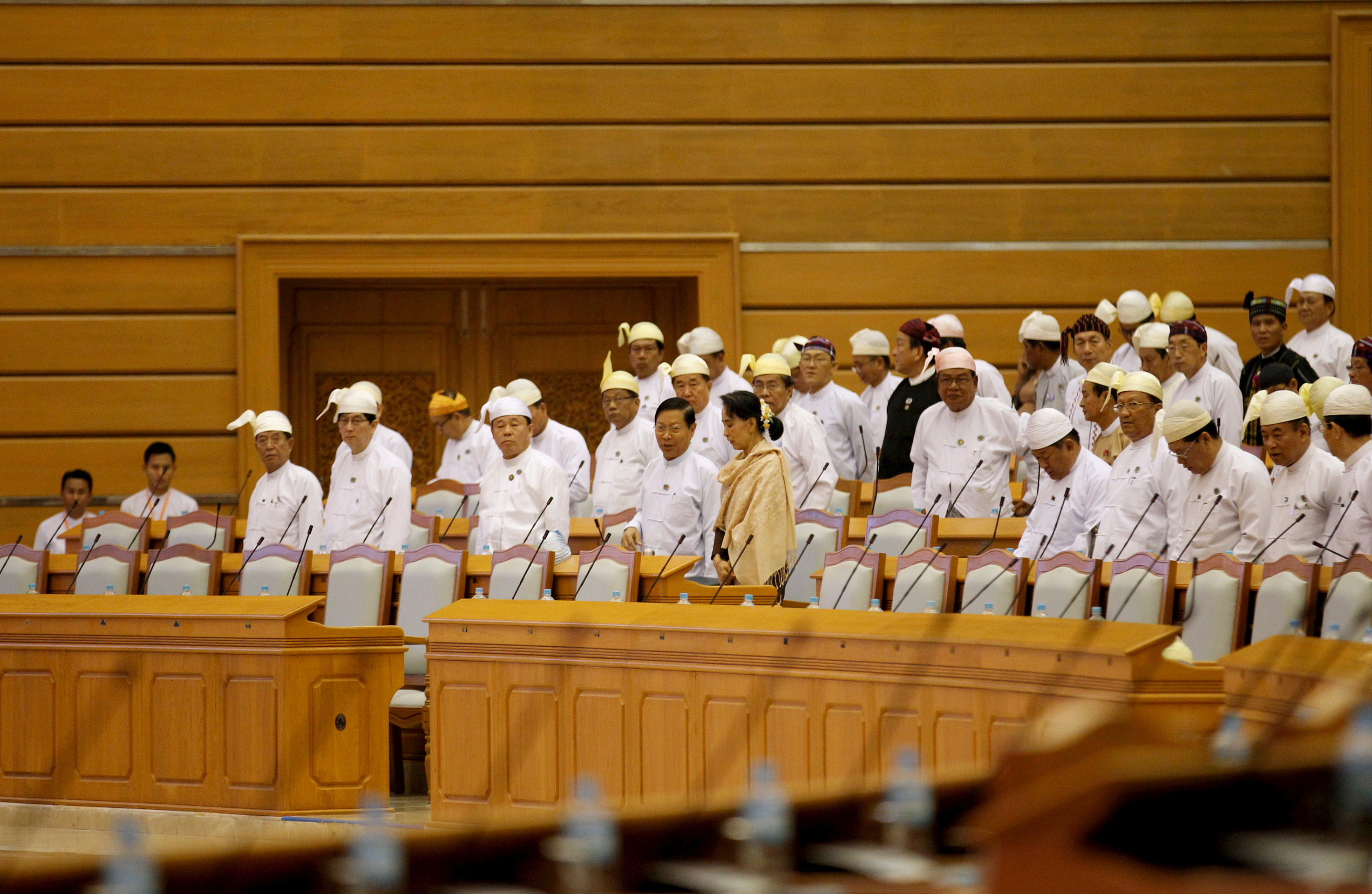
Soldiers clear traffic as an armored personnel vehicle moves on a road in Yangon, Myanmar, January 28, 2021. /Reuters
Soldiers clear traffic as an armored personnel vehicle moves on a road in Yangon, Myanmar, January 28, 2021. /Reuters
The detention on Monday of Myanmar State Counsellor Aung San Suu Kyi, President U Win Myint and other senior officials and political figures, in what some were calling a coup by the military, followed months of escalating tensions in the southeast Asian country.
Here is a timeline of events leading up to this:
2011
Myanmar gets its first civilian government after 49 years of military rule in the country. Aung San Suu Kyi, recently released from house arrest, meets with President Thein Sein, indicating a rapprochement between her National League for Democracy (NLD) party and the military.
2015
November 8: Myanmar holds its first democratic general election, in which the NLD wins a landmark victory. Suu Kyi assumes power in a specially created role of state counsellor and becomes de facto leader of the country. Myanmar's 2008 constitution however still guarantees 25 percent of the seats in parliament and control of three key ministries for the military.
Read more: CGTN's liveblog on Myanmar

Supporters of Myanmar's military take part in a protest against the government, the election commission and foreign embassies in Yangon, Myanmar, January 30, 2021. /Reuters
Supporters of Myanmar's military take part in a protest against the government, the election commission and foreign embassies in Yangon, Myanmar, January 30, 2021. /Reuters
2017
Internal conflict in the state of Rakhine, leading to hundreds of thousands of Rohingya to flee, triggers international criticism of Suu Kyi, but she remains hugely popular at home.
2020
November 3: Army chief General Min Aung Hlaing says the civilian government is making "unacceptable mistakes" in the run-up to the general election on November 8, the second warning in two days about potential bias in the vote.
November 8: Myanmar holds its general election, even with Yangon and other areas on lockdown due to the COVID-19 pandemic. The NLD claims another landmark victory but tensions begin to rise.
November 11: The military-backed Union Solidarity and Development Party (USDP), the main opposition party, demands a re-run of the election and calls for the military to ensure fairness, alleging widespread irregularities.

National League for Democracy party leader Aung San Suu Kyi (center, front) attends the last day of Union Parliament session in Nay Pyi Taw, Myanmar, January 29, 2016. /Reuters
National League for Democracy party leader Aung San Suu Kyi (center, front) attends the last day of Union Parliament session in Nay Pyi Taw, Myanmar, January 29, 2016. /Reuters
2021
January 26: Army military spokesman Brigadier General Zaw Min Tun warns the army will "take action" if the election dispute is not settled. He does not rule out the military taking power. Tanks are briefly deployed on the streets of Yangon and the capital Nay Pyi Taw during the week.
January 28: The election commission rejects allegations of vote fraud.
January 30: Myanmar's military says it will protect and abide by the constitution and act according to law, and denies reports that the army chief threatened to revoke the constitution. Pro-military demonstrations are held in several major cities.
February 1: Suu Kyi, President Win Myint and other senior officials and political figures from the ruling party are detained in an early morning raid, hours before parliament was due to convene for the first time since the November election. The military says this was in response to "election fraud" and declares a one-year state of emergency, with army chief General Min Aung Hlaing in charge. The NLD alleges a coup. U.N. Secretary-General Antonio Guterres condemns the detentions and "urges the military leadership to respect the will of the people of Myanmar."
(With input from Reuters, AFP)

